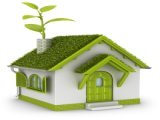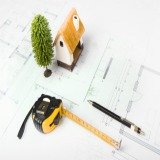Septic System Problems - What Are They And How Do You Prevent Them?
Septic system problems can happen to any homeowner that has this type of system for waste instead of being hooked up to a municipal sewer system. The septic system of your home requires proper care and maintenance, and if these steps are not taken then many different problems can occur.
Your septic system includes many components and areas, and each of these may experience problems, require repairs, or need routine maintenance. Not all of these issues are caused by poor maintenance or other negligent reasons; sometimes you may find septic tank problems or drainage issues because of other factors as well.
Some septic system problems can be caused by a drainfield or system that is too small or too large, and others may occur because of a garbage disposal unit or feminine hygiene products which are flushed down the toilet. There are many steps that you can take to avoid any malfunctions, damage, or the poor operation of your system, and these can help you avoid the high cost of replacing the system.
There are many things that can go wrong with your septic system, which runs from the drains in your home through the septic tank, and then out into the drainfield are. The septic tank captures all of the solids, which slowly degrade and break down over time with the help of bacteria.
Liquids will pass through your septic tank and are known as effluent, and this material then travels into your drainfield where it is released, absorbed, and then filtered. Septic system problems can happen at any point along this route, and there are a number of signs that may indicate something is not right.
Possible Septic System Problems
Some of the possible problems that you may notice if your septic system is not functioning correctly can include:
- Slow drains anywhere in your home
- Clogged drains anywhere in your home
- Sewage backup which may have a bad odor, and which may come out any of the drain pipes
- An area of your lawn that is wet or soggy, and which is located on or near the drainfield for your septic system
- A foul odor on your property
- Sewage ponds on your property
- Ruptured pipes, from freezing temperatures or other causes
- An overloaded system, which cannot handle all of the sewage and waste being produced
- Freezing of the septic system components if the system is not used on a regular basis or is too large for the home it is servicing
- Blocked screens in the septic tank, which prevent effluent from being drawn out to the drainfield
- Septic tank fractures
- Toilets which back up frequently
- Toilets which do not flush properly and dispose of all the waste the first time
- Soil which is not absorbent enough for the amount of effluent produced each day
- Soil which is saturated from excessive rain or other causes
- Complete septic system failure
- Septic tank cave in
- A lack of the bacteria needed, due to infrequent septic system use
- Excessive algae growth in the pipes, preventing drainage from occurring properly
- Tree roots in the pipes, causing damage and blockages
- Pipe collapse
- System aging and deterioration
Septic System Problems with Small Homes
Small homes can have different septic system problems than large homes, and the home size and number of occupants is an important consideration when your septic system is being designed and installed. A small home will have much lower amounts of waste in most cases, and if the system or single components are too large then your septic system may not be able to create the bacteria and heat needed to operate efficiently.
Septic tank problems with small homes include the fact that little solid waste is being deposited in the tank. These wastes are part of the process, and the decay creates heat. Bacteria also feed on the solids in the tank, and this will help to break them down into liquids as well.
The tank size that you choose for your home should be appropriate for the amount of waste that you will generate, but not much larger than this amount. If you choose a tank that is too large the septic system cannot function optimally.
A blocked screen or damage to one of the system components can also cause septic system problems. You may notice that your drains in the home are not working properly, and your toilets may clog or overflow instead of flushing properly.
Septic System Problems with Large Homes
Large homes can have a number of septic system problems as well, some that small homes also experience and some that are different. Large homes can supply large amounts of waste, and this can create an entire new category of problems.
Large homes may have septic tank problems if the waste created is more than the tank and drainfield can process. Large homes usually mean many people, which can create substantial amounts of waste water and solids both.
If the drainfield soil becomes saturated because of excessive amounts of waste then the water can not be released and filtered properly, and the entire system may back up or overflow. This can occur inside your home, but it can also happen on your property outside.
Some large homes may require two septic systems to avoid any septic system problems, with tanks located on opposite sides of the home. A four bedroom home will hold eight people on average, and this means a lot of additional toilet paper, laundry soap and other household cleaners, and other accumulated waste that can end up in your septic tank.
High water use can cause your drainfield to fail if your system is not designed for the waste amount your home is creating, and when this happens you will usually need to have a replacement drainfield installed. Two septic tanks and systems can eliminate this problem, and ensure that your septic system can handle the waste created on even the busiest day n your home.
Septic System Problems and Additive Products
Are additive products for septic systems a good idea? The answer depends on who you ask. Many experts say that additive products will not eliminate most septic system problems, and that these additives may actually create problems in many ways.
Some products may claim to treat septic tank problems, while others may claim to clean out your entire septic system from the drains to the drainfield. These additives may be classified as organic solvent, inorganic, and biological.
Biological additives can include enzymes, bacteria, and yeast, and these products operate on the assumption that the natural balance of organisms in the system is not correct. These products are supposed to work by helping to break down the solids faster, but many have not been proven to be effective.
Septic system problems can be treated with organic solvents, but these additives have many risks and concerns associated with them. These products may help clear built up grease and fats, but when they are eliminated from the system they may not be filtered out completely, and may leech into your groundwater.
Inorganic additives can cause the normal waste and septic process to become less effective, and this can cause septic tank problems. Sludge may start to build up in your system, making it harder to discharge effluent and causing problems in your home drains.
Most experts recommend that proper care and maintenance is the key to keeping your septic system in the best possible condition, and additives may not be the right answer for most problems related to your septic system.
Septic System Problems with Specific Systems in Small Homes
Some septic system types will not work well with small homes, and may lead to many septic system problems. If your home is located on property that will not allow a conventional system because of inadequate soil or poor drainage then other options must be explored.
A mound system for small homes may not be worth the expense, because these systems can be very expensive. The fact that the effluent must travel upwards to be adequately filtered means more equipment will be needed, and a higher chance of damage or malfunctions may mean higher repair costs and more maintenance.
Small homes also face the risk of conventional systems failing if they freeze because of little use. Vacation homes and those with large septic system that are well over the needed capacity may not operate correctly, leading to many issues and service calls.
Septic system problems can occur with disinfection systems and biofilter systems as well with small homes. These systems are expensive and may include delicate electronics and other high end components, and a small home may not have the value necessary to justify the expense of purchasing, installing, and maintaining this type of system.
Evapotranspiration and/or absorption systems will not usually work with small homes, because these systems normally require a large area of land. Small homes usually have small lots, and that can mean problems if the system is not extensive enough to drain properly.
Septic System Problems with Specific Systems in Large Homes
A conventional or gravity system may not be ideal for large homes, and may lead to septic system problems for many reasons. A high water table, excessive water consumption, and many other things can cause these systems to experience problems, in part because the system can not handle the large water amounts released.
Common septic tank problems with large homes can include the tank filling up much faster than average, requiring more frequent pumping and other maintenance. A dual septic system can help alleviate this problem with large homes and families.
A pressure distribution system may require more frequent pump replacement, because frequent use will cause these components to wear out much faster. A mound system type may not work well because of the waste amount produced, due to the fact that these systems must pump the effluent up so that it can filter through a mound of soil.
Septic system problems in large homes can result in poor soil absorption or soil saturation, and these problems may be continuous if certain steps are not taken.
A drip irrigation system may not be the best possible choice with large homes because of the large amounts of water and waste produced. This type of system may not be able to handle the volume of water and effluent, and may back up or overflow.
Ways to Prevent Septic System Problems
Whether you have a large or small home there are some common steps that you can take to avoid any possible septic system problems. These include:
- Never flush anything except for waste and toilet paper down the toilet. Septic tank problems and pipe blockages can result from feminine hygiene products, diapers, and even small cigarette butts being flushed.
- Try to use water evenly and sparingly, so that your system is not overwhelmed. Spread out laundry and other chores which require significant amounts of water and produce a lot of waste, and try to do some each day instead of having a single day for all the laundry.
- Avoid using a garbage disposal, because food does not degrade the same way that human wastes do. Introducing large quantities of ground up food into your septic system can cause problems.
- Never pour oil or grease into any drains, because this can interfere with the way your septic system functions. Instead let the grease or fat cool, and then use a spoon to scrape as much as possible into the garbage container.
- Make sure you have your tank pumped every three to five years, to prevent any septic tank problems. Yearly inspections will also reveal any small areas of damage or minor issues before they become serious and more expensive to repair.
- Keep trees well clear of any area that contains components of your septic system. Tree roots can rupture pipes, cause blockages, and create havoc on a septic system of almost any type.
- Always dispose of chemicals and toxins properly, and never pour these substances down a drain or into your soil. They may interfere with the way that your system works, and may possibly cause damage to system components.
You Might Also Like:
Home Design Floor PlansHome Design Floor Plans |
Green Home DesignsGreen Home Design |
Boat Home PlansBoat Houses |












